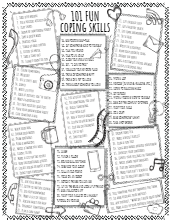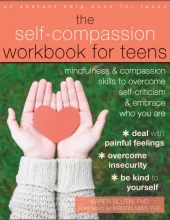Fight or Flight Response
The resource is a visual representation showing how the body responds to threats, highlighting the fight or flight response. It illustrates the physical changes, like a faster heartbeat and tensed muscles, and points out the surge of adrenaline. The image also shows which body functions slow down to save energy for responding to danger.

What can keep anxiety going
This resource provides insight into the cycle of anxiety and its persistence. It begins with a feared situation that acts as a trigger, leading to physical symptoms that are part of the fight or flight response. The resource also delves into the psychological aspect, offering five specific examples of thoughts that can arise during these anxious moments, helping to understand how our thinking patterns can contribute to sustained anxiety.

Vicious cycle of anxiety
This visual guide illustrates the vicious cycle of anxiety, demonstrating how thoughts, feelings, physical symptoms, and behaviours are interconnected. It provides clear examples for each aspect, showing how one can lead to the next, creating a loop that perpetuates anxiety. This resource is designed to help individuals recognise and understand the patterns that contribute to their anxiety.

Vicious cycle of anxiety – blank
The “Vicious Cycle of Anxiety” template is a blank chart designed for individuals to record and reflect on their experiences with anxiety. It includes text boxes for entering information about a triggering situation, personal thoughts, feelings, bodily reactions, and actions taken. This tool aims to help users see the connections between different aspects of their anxiety, providing a clear structure for identifying and understanding how their thoughts, feelings, physical sensations, and behaviours interact and potentially perpetuate the cycle of anxiety.

Vicious cycle of anxiety with example
The guides provides a breakdown of how anxiety can affect an individual’s thoughts, feelings, physical sensations, and behaviours. It describes a pattern where negative thinking leads to intense feelings of fear and worry, which manifest in physical symptoms like a pounding heart and dry throat. These symptoms can then influence behaviours such as stuttering and avoiding eye contact, which reinforce the negative thoughts and feelings, creating a self-sustaining cycle of anxiety.

Automatic Negative Thoughts (ANTs) and unhelpful thinking styles
The document offers a comprehensive guide on identifying and managing unhelpful thinking patterns. It details various types of cognitive distortions such as all-or-nothing thinking, mental filtering, jumping to conclusions, and others, providing examples and strategies to counteract them. The focus is on recognising these negative thought patterns, understanding their impact, and adopting more balanced and positive ways of thinking.

The Worry spiral
“The Worry Spiral” explains how a small worry can escalate into a series of increasingly negative and unrealistic thoughts. It provides examples of common worries and how they can spiral out of control, and suggests strategies to interrupt this cycle. The focus is on recognising, challenging, and replacing unhelpful thoughts with more realistic and constructive ones.

Thought diary
“Thought Diary Form” is a tool designed to help individuals track and analyse their thoughts, feelings, and situations. It prompts users to record specific situations or events, their automatic thoughts, feelings or sensations experienced, and the intensity of these feelings. This diary aims to increase self-awareness and identify patterns in thinking that may contribute to emotional distress or unhelpful behaviours.

10 steps to challenging an unhelpful thinking style worksheet
“Ten Steps to Challenging an Unhelpful Thinking Style” provides a structured approach to identifying and modifying negative thought patterns. It guides individuals through steps including using a thought diary, exploring and challenging thoughts, considering the impact on mood, and developing more helpful thinking styles. The focus is on self-awareness, evidence-based evaluation of thoughts, and adopting more balanced and positive perspectives.

The Worry tree
“The Worry Tree” presents a visual and practical tool to help individuals manage their worries effectively. It guides users through a process of identifying worries, categorising them as either ‘actionable’ or ‘not actionable’, and then applying appropriate strategies for each type. The aim is to reduce anxiety and stress by providing a clear framework for dealing with worries in a constructive and controlled manner.

Worry diary
“Worry Diary” is an interactive tool designed to help individuals record, understand, and manage their worries. It prompts users to note the date, time, situation, the nature of the worry, and their level of anxiety, encouraging self-awareness and reflection. The diary aims to distinguish between different types of worries, such as hypothetical worries or practical problems, guiding users towards appropriate coping strategies.

Worry time list worksheet
“Worry Time List” worksheet provides a structured approach to managing worries by allocating a specific daily time for addressing them. It encourages individuals to note their worries during the day and postpone dealing with them until the designated ‘Worry Time’, promoting focus on the present moment. This method aims to help in distinguishing between hypothetical and practical problems, using a worry tree sheet and helpful tips to challenge unproductive worries effectively.

Helpful tips for Worry time
“Helpful Tips for Worry Time” offers guidance on effectively utilizing designated worry periods to manage anxiety. It suggests assessing whether worries recorded earlier are still relevant or important, using tools like the Worry Tree to categorize them as hypothetical or practical. The focus is on evaluating the evidence for worries, recognizing patterns, and adopting strategies to let go of unproductive concerns, ultimately aiming to reduce anxiety and improve emotional well-being.

The Worry spiral
“The Worry Spiral” outlines how small worries can escalate into overwhelming anxiety through a series of escalating, negative thoughts. It illustrates this process with examples, showing how a simple concern can lead to catastrophic thinking. The document also provides strategies to interrupt this spiral, such as questioning the likelihood of the worry, focusing on more helpful ways of thinking, and staying grounded in the present.

7 step problem-solving technique
“Seven Step Problem-Solving Technique” outlines a detailed approach for addressing and resolving problems. It guides users through identifying the problem, considering potential consequences of inaction, brainstorming solutions, and evaluating the pros and cons of each solution. The technique culminates in creating an action plan, implementing it, and reviewing the outcomes, fostering effective problem-solving skills.

5 steps to facing your fears
“Five Steps to Facing Your Fears” provides a structured approach for confronting and managing fears. It involves identifying the feared situation, understanding and challenging fears, creating a coping plan using skills like relaxation techniques and mindfulness, and then facing the fear incrementally. The process concludes with a review of the experience, learning from it, and planning for future encounters with similar situations.

5 steps to challenging safety behaviours
“Five Steps to Challenging Safety Behaviours” outlines a method for understanding and modifying safety behaviors, which are actions people take to avoid anxiety or fear. The steps include identifying these behaviors, evaluating how they help or worsen situations, imagining the outcomes without these behaviors, creating a plan with coping strategies, and reviewing the experiences to learn and adjust for future situations. This approach aims to help individuals face their fears more effectively and reduce reliance on unhelpful safety behaviors.














